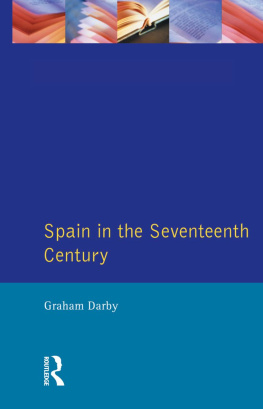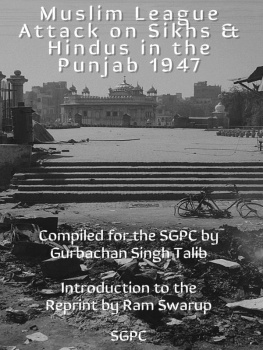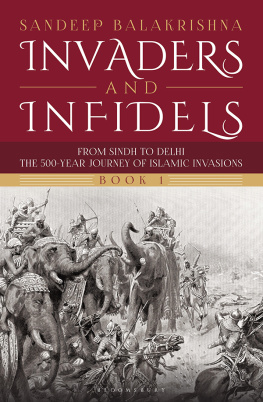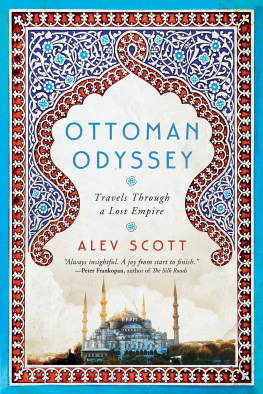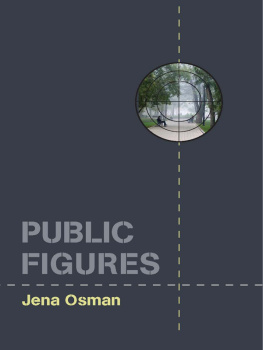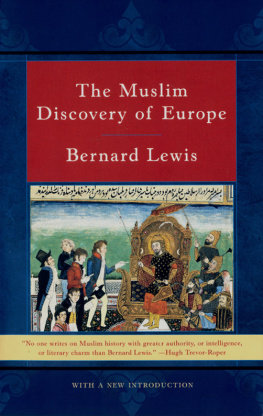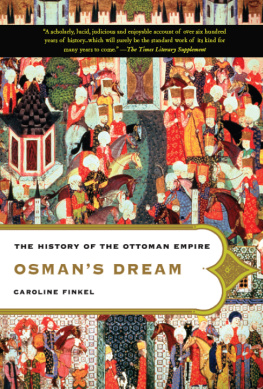Osman Of Timisoara - Prisoner of the Infidels: The Memoir of an Ottoman Muslim in Seventeenth-Century Europe
Here you can read online Osman Of Timisoara - Prisoner of the Infidels: The Memoir of an Ottoman Muslim in Seventeenth-Century Europe full text of the book (entire story) in english for free. Download pdf and epub, get meaning, cover and reviews about this ebook. year: 2021, publisher: Univ of California Press, genre: Non-fiction. Description of the work, (preface) as well as reviews are available. Best literature library LitArk.com created for fans of good reading and offers a wide selection of genres:
Romance novel
Science fiction
Adventure
Detective
Science
History
Home and family
Prose
Art
Politics
Computer
Non-fiction
Religion
Business
Children
Humor
Choose a favorite category and find really read worthwhile books. Enjoy immersion in the world of imagination, feel the emotions of the characters or learn something new for yourself, make an fascinating discovery.
- Book:Prisoner of the Infidels: The Memoir of an Ottoman Muslim in Seventeenth-Century Europe
- Author:
- Publisher:Univ of California Press
- Genre:
- Year:2021
- Rating:4 / 5
- Favourites:Add to favourites
- Your mark:
- 80
- 1
- 2
- 3
- 4
- 5
Prisoner of the Infidels: The Memoir of an Ottoman Muslim in Seventeenth-Century Europe: summary, description and annotation
We offer to read an annotation, description, summary or preface (depends on what the author of the book "Prisoner of the Infidels: The Memoir of an Ottoman Muslim in Seventeenth-Century Europe" wrote himself). If you haven't found the necessary information about the book — write in the comments, we will try to find it.
Osman Of Timisoara: author's other books
Who wrote Prisoner of the Infidels: The Memoir of an Ottoman Muslim in Seventeenth-Century Europe? Find out the surname, the name of the author of the book and a list of all author's works by series.
Prisoner of the Infidels: The Memoir of an Ottoman Muslim in Seventeenth-Century Europe — read online for free the complete book (whole text) full work
Below is the text of the book, divided by pages. System saving the place of the last page read, allows you to conveniently read the book "Prisoner of the Infidels: The Memoir of an Ottoman Muslim in Seventeenth-Century Europe" online for free, without having to search again every time where you left off. Put a bookmark, and you can go to the page where you finished reading at any time.
Font size:
Interval:
Bookmark:
Prisoner of the Infidels
The publisher and the University of California Press Foundation gratefully acknowledge the generous support of the Constance and William Withey Endowment Fund in History and Music.
The Memoirs of an Ottoman Muslim in Seventeenth-Century Europe
Osman of Timioara
Edited, Translated, and Introduced by Giancarlo Casale

UNIVERSITY OF CALIFORNIA PRESS
University of California Press
Oakland, California
2021 by Giancarlo Casale
Library of Congress Cataloging-in-Publication Data
Names: Osman Aa, active 16711725, author. | Casale, Giancarlo, editor, translator, writer of introduction.
Title: Prisoner of the infidels : the memoir of an Ottoman Muslim in seventeenth-century Europe / Osman of Timioara; edited, translated, and introduced by Giancarlo Casale.
Other titles: Gvurlarn esiri. English.
Description: Oakland, California : University of California Press, [2021] | Includes index.
Identifiers: LCCN 2020053128 (print) | LCCN 2020053129 (ebook) | ISBN 9780520383395 (paperback) | ISBN 9780520383401 (ebook)
Subjects: LCSH: Osman Aa, active 16711725. | Austro-Turkish War, 17161718Personal narratives, Turkish. | Prisoners of warRomaniaTimioaraBiography. | Prisoners of warTurkeyBiography.
Classification: LCC DR545 .O8513 2021 (print) | LCC DR545 (ebook) | DDC 943.6/031092 [B]dc23
LC record available at https://lccn.loc.gov/2020053128
LC ebook record available at https://lccn.loc.gov/2020053129
Manufactured in the United States of America
25 24 23 22 21
10 9 8 7 6 5 4 3 2 1
For Sinem
A prisoner of this infidel
1. Surrender
2. Ransom
3. Crime and Punishment
4. Death and Resurrection
5. Respite
6. Bonds of Love
7. To the Capital
8. A Friend in Need
9. An Unexpected Turn of Events
10. Into the Lions Den
11. Grifters
12. To the Border
13. The End
1. The Ottoman Balkans, 16831718
2. Behind Enemy Lines, 16881690 (chapters 15)
3. To Vienna and Beyond, 16901698 (chapters 69)
4. Osman in Vienna, 16911699 (chapters 79)
5. Osmans Border Run (chapters 1013)
I have worked on this edition of Osmans memoirs on and off for the better part of ten years. Over that time, Osman and I have become old friends, and I am now left with a bittersweet feeling, knowing that, our work complete, we shall no longer be seeing much of each other. I suppose that is a sign that our time together was well spent.
Besides Osman, there are of course many other friends, colleagues, and relations to whom I owe a debt of gratitude for their help with this little book. In fact, I hesitate to name them all, in part because the longer the list of people one thanks, the greater the risk that someone unjustly left off will take offense (a lesson I memorably learned on my wedding day, some years ago).
So, let me stick to the absolute essentials. Molly Greene, Eric Dursteler, and David Do Pao all read and generously commented on the entire manuscript, sharing helpful advice and saving me from many embarrassing errors (those that remain are of course my own). My stepmother, Patricia Brown, also read an early draft of the translation, providing feedback and encouragement. Later in the writing process, Selim Kuru and Bruce Fudge made important suggestions for the Introduction. Arda Aknc contributed to the notes. Vuk Uskokovi helped with translations of several phrases in Serbo-Croatian. Nazl Songlen prepared the maps. Peter Dreyer edited the final draft. Lastly, special thanks to my editor at the University of California Press, Eric Schmidt, for the opportunity to introduce Osman to a wider circle of friends.
The transcription of the Ottoman Turkish alphabet is a perpetual problem for scholars, with no single system that is either universally accepted or suitable for all purposes. The present edition uses two different systems, one for the text, and another for the accompanying notes.
In the interest of creating a translation that is as accessible as possible to nonspecialists, I have chosen to avoid diacritical marks or characters from the Turkish alphabet in the main body of Osmans memoir. Instead, Ottoman Turkish proper names are rendered according to their closest approximation in American English spelling (so: Koja Jafer Pasha; not Koca Cafer Psha or Koca Cafer Paa), while place-names are written according to the official spelling of the nation-state where they are located today (a choice discussed in more detail in the Note on the Translation).
By contrast, the scholarly notes that accompany this translation feature a number of direct citations of Osmans original Ottoman Turkish. Since these will be of interest primarily to specialists, they are rendered in full transliteration. The system employed is the following:

Short vowels are rendered using the modern Turkish alphabet: a, e, , i, o, , u, .
Alongside an adventurous life as a soldier, captive, and diplomat, Osman of Timioara was a literary trailblazer. With only a rudimentary formal education, and without any direct cultural models to guide him, Osman composed the first book-length autobiography ever written in Ottoman Turkish, essentially creating a new genre from scratch. The fruit of his labors, Prisoner of the Infidels, is a unique, compelling, and stylistically inventive text that presents the translator with more than its share of linguistic challenges.
First among these is undoubtedly the challenge of reproducing, in English, the effect of Osmans straightforward and uncannily modern prose style, a quality that immediately strikes anyone reading his text in the original Ottoman Turkish. Generally speaking, the standards of eloquence in early modern Ottoman literature prioritized baroque erudition over clarity, with a heavy emphasis on elaborate metaphors, learned allusions, and the ostentatious use of Arabic and Persian vocabulary. This had the cumulative effect of making literary language starkly different from spoken language, with complex layers of meaning that revealed themselves only gradually and that were fully comprehensible only to a chosen few.
By contrast, Osmans prose is a model of simplicity and clarity. His sentences are short and straightforward, he revels in vernacular turns of phrase, and he makes prodigious use of first-person speech. Together, these qualities give his writing an unusual level of accessibility and readabilitya paradoxically disorienting experience for a reader of the original Ottoman text that can be reproduced only imperfectly in translation. As a gesture in this direction, my own English rendering of Osmans most colloquial expressions has wavered between direct translation where the meaning is readily apparent and freer translation when the immediacy of his language might otherwise be lost. Typically, instances of the latter are flagged and explained in the accompanying backnotes.
Another, related challenge of translation involves Osmans frequent use of multiple languages, a stylistic feature thatone is tempted to say intentionallydocuments the polyglot environment of Osmans home region, the Ottoman Balkans, as well as highlighting Osmans own remarkable dexterity as a linguist. Thus, while Osman writes primarily in Ottoman Turkish, and consistently identifies this as his language, he also displays a comfortable command of a seventeenth-century variant of vernacular Serbo-Croatian (which he calls Serb) and of Romanian (which he calls Vlach). The latter he presumably learned growing up in his native Timioara, where it was widely spoken, while the former might even be considered his mother tongue, inasmuch as both his parents were originally from what is now Serbia. In addition, Osman prayed in Arabic, knew a smattering of Hungarian, and over the course of his adventures progressively learned more German, eventually to the point of being able to read and write it competently and almost to pass as a native speaker. All of these languages make appearances at various points in the text, particularly when Osman is reporting dialogue, a technique that considerably enhances the immediacy and realism of his account. Occasionally, he even reports a phrase in a foreign tongue without providing a Turkish equivalent, thereby vividly reproducing for the reader his own perplexity or inability to communicate at certain moments. To preserve this effect in English, unfamiliar words and phrases in languages other than Turkish have usually been let stand in the text without English translation, but with clarification in the accompanying note.
Next pageFont size:
Interval:
Bookmark:
Similar books «Prisoner of the Infidels: The Memoir of an Ottoman Muslim in Seventeenth-Century Europe»
Look at similar books to Prisoner of the Infidels: The Memoir of an Ottoman Muslim in Seventeenth-Century Europe. We have selected literature similar in name and meaning in the hope of providing readers with more options to find new, interesting, not yet read works.
Discussion, reviews of the book Prisoner of the Infidels: The Memoir of an Ottoman Muslim in Seventeenth-Century Europe and just readers' own opinions. Leave your comments, write what you think about the work, its meaning or the main characters. Specify what exactly you liked and what you didn't like, and why you think so.


